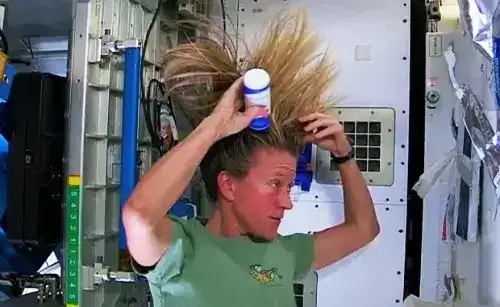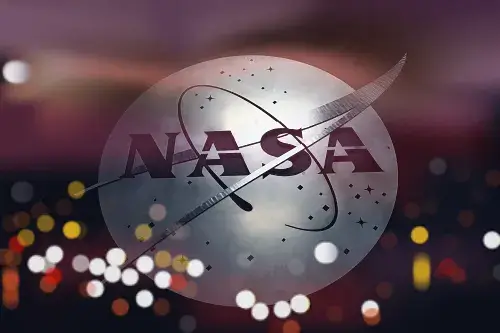Astronauts. The Mysterious Mariners of the Cosmos. Fascinating facts for your insatiable curiosity. Have you ever imagined what it would feel like to float through the endless desert of space?
Astronauts Or “Space Sailors”?
That’s what they could be called, inspired by the Greek roots of the word “astronaut” astro (star) and nautes (sailor). Yet this incredible profession offers far more than just glory and glamour. It hides surprising stories, captivating paradoxes, and noble traditions that continue to amaze.
Astronauts and Their Many Names.
While Americans refer to them as astronauts, the Chinese call them taikonauts, Germans and Norwegians use Raumfahrer, and in Kazakhstan, they’re known as garyshker.
But what if Latvians simply called them “space sailors”? Elegant and full of meaning, wouldn’t you agree?
The Countdown A Gift from the Movies.
“Ten… Nine… Eight…”
That iconic countdown before liftoff? It didn’t come from NASA it came from cinema. In 1929, German director Fritz Lang used it in his science fiction film Woman in the Moon to build suspense.
Today, it’s a signature ritual of space launches. Once again, film has inspired science.
The Medieval Cathedral Mystery.
Why is there an astronaut sculpture on the facade of Salamanca Cathedral in Spain a building constructed between 1513 and 1733?
Many speculated wildly: ancient prophecies, Nostradamus, or even alien visitors.
But the truth?
Much simpler. During renovations in 1992, sculptors added a modern symbol an astronaut as part of a long-standing tradition to incorporate contemporary motifs.
Not a joke, just a touch of historical whimsy.
Sleeping in Space.
Many astronauts struggle with sleep in space. First, they have to strap themselves into bed. Without gravity, they’d float away bumping into walls and equipment.
Second, there’s constant noise from air filters and life support systems. Not snoring, surprisingly astronauts who snore on Earth often stop doing so in space.
Most disorienting of all: the sun rises and sets every 90 minutes aboard the space station, resulting in 16 sunrises and sunsets per day. Getting used to that takes time.
The Space Toilet, A High-Tech Throne.
One of the most asked and awkward questions: how do astronauts go to the toilet?
Training includes mastering the “toilet position simulator,” where astronauts watch a monitor showing a camera view under the toilet seat to align themselves correctly.
Straps secure their legs and hips to keep them seated in zero gravity. Solid waste is suctioned into containers for disposal, while liquid waste is purified often recycled into clean water (what happens after that, astronauts tend to leave unsaid).
The air is meticulously filtered to remove odors and bacteria.
The cost?
About $19 million per space toilet. Pricey but not much, if you compare it to some gold-plated thrones on Earth.
Food in Space.
Modern astronaut meals are surprisingly diverse — around 250 menu items. Meals are packaged in cans, tubes, or vacuum-sealed plastic, and provide roughly 3,200 calories a day.
Personal preferences and national traditions are taken into account:
• Japanese astronauts get sushi,
• Chinese crew members enjoy sweet-and-sour pork with rice,
• Russians have borscht, cottage cheese, and meatballs.
Taste perception changes in space due to altered metabolism but the meals remain satisfying and nutritious.
Bath Time in Orbit.
Showers in space? Not quite. Before “washing,” astronauts fix their feet into special boots and use a mouthpiece to supply air, pinching their nose shut. Water is then applied to the skin and wiped off with suction.

Most often, astronauts just wipe down with wet cloths or sponges. Hair is washed with dry shampoo, and toothpaste is edible no rinsing needed.
Shaving is done with special electric razors that trap hairs in a sealed chamber. Even one stray hair floating around can pose a danger.
Astronaut Superstitions.
Despite being icons of science and technology, astronauts are highly superstitious. For example, missions never launch on a Monday — 11 accidents have occurred on that day.
Charming or irrational? Either way, the traditions persist. Thinking of joining the journey? It helps to know who’s leading the way and whom to trust.
Definitely not Russia, with its current focus on war and conflict. Instead, look to the U.S. and China, whose space programs represent not just technological ambition, but strategic geopolitical goals.
The U.S. Private Innovation and Technological Edge.
NASA collaborates with private companies like SpaceX and Blue Origin. Heavy-lift rockets such as the Falcon Heavy and the upcoming Starship are revolutionizing space travel with their reusability and massive payloads.
China. A Rising Power.
China is rapidly becoming a major space power. Its Tiangong space station is a symbol of national independence.
The country has landed rovers on both the Moon and Mars and is developing a heavy-lift rocket, the Long March 9, for future interplanetary missions.
A New Space Race.
While the U.S. leads in innovation, China is catching up quickly. This new race isn’t just about science it’s about influence, diplomacy, and vision. Meanwhile, Russia seems stuck in the past, obsessed with war and isolation.
What are the intentions of the world’s countries in conquering space by 2025?
United States: Embracing Commercial Partnerships
The U.S. is pivoting towards commercial collaborations in space endeavors. The 2026 federal budget proposes significant cuts to NASA’s traditional programs, including the termination of the Space Launch System (SLS) and Orion capsule after Artemis III.
Instead, there’s a focus on funding commercial lunar and Mars missions, notably benefiting companies like SpaceX and Blue Origin.
Additionally, NASA’s Commercial Lunar Payload Services (CLPS) will continue delivering scientific payloads to the Moon, and SpaceX plans to test in-orbit refueling with its Starship, a critical step for future Mars missions.
China: Expanding Lunar and Deep Space Missions.
China’s space program is advancing rapidly with several ambitious projects:
• Tianwen-2: Launching in May 2025, this mission aims to collect samples from the near-Earth asteroid Kamoʻoalewa and study comet 311P/PANSTARRS, enhancing our understanding of the solar system’s formation.
• Tiangong Space Station: The Shenzhou 20 mission, launched in April 2025, is currently supporting a crew aboard the Tiangong space station, with Shenzhou 21 planned for October 2025 to continue operations.
India: Advancing Human Spaceflight.
India’s Indian Space Research Organisation (ISRO) is preparing for its first human spaceflight program:
• Gaganyaan-1: Scheduled for Q2/Q3 2025, this uncrewed test flight will carry the humanoid robot Vyommitra to low Earth orbit, laying the groundwork for future crewed missions.
Japan: Innovating Lunar Exploration.
Japan’s ispace is leading the M2/Resilience mission, launched in January 2025, which aims to:
• Study lunar soil composition.
• Conduct water extraction experiments to produce oxygen and hydrogen, essential for long-term lunar habitation.
• Test advanced navigation and autonomous rover technologies for future missions.
European Space Agency (ESA): Testing Reusable Spacecraft.
ESA plans to conduct an orbital test flight of its uncrewed Space Rider spacecraft in Q3 2025. This reusable vehicle is designed for scientific experiments in low Earth orbit, focusing on microgravity research and testing new technologies for future missions.
Global Trends.
Commercialization and International Collaboration. The overarching trend in 2025 is the increasing commercialization of space activities and international collaborations.
Private companies are playing a more significant role in space exploration, while nations are partnering on complex missions, reflecting a shift towards a more cooperative and commercially driven space era.
The Final Frontier Awaits.
Astronauts our brave explorers of the unknown offer more than tales of stars and silence.
They remind us of humanity’s drive to discover, to push boundaries, and to dream.
Have a Stellar Day!






